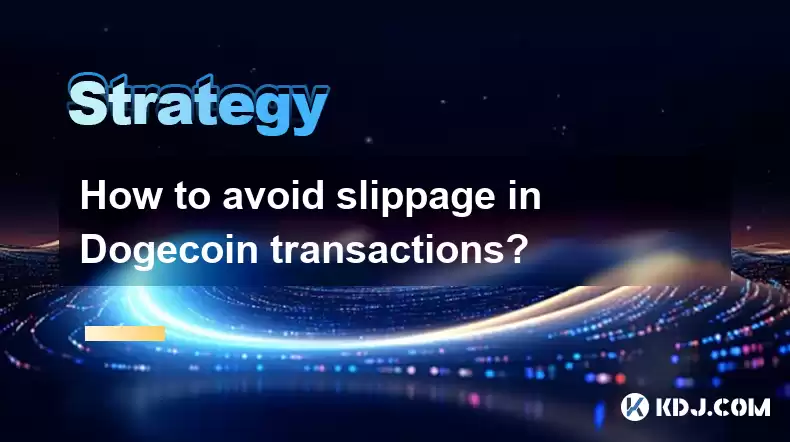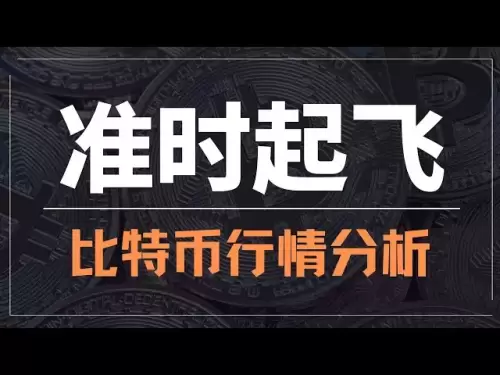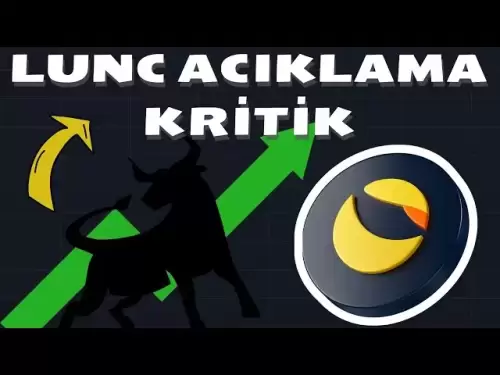-
 Bitcoin
Bitcoin $117300
1.93% -
 Ethereum
Ethereum $3866
5.21% -
 XRP
XRP $3.109
3.81% -
 Tether USDt
Tether USDt $1.000
0.01% -
 BNB
BNB $781.5
1.52% -
 Solana
Solana $173.0
2.95% -
 USDC
USDC $0.9998
0.00% -
 Dogecoin
Dogecoin $0.2181
6.31% -
 TRON
TRON $0.3403
0.93% -
 Cardano
Cardano $0.7683
3.91% -
 Hyperliquid
Hyperliquid $40.08
5.09% -
 Sui
Sui $3.742
7.38% -
 Stellar
Stellar $0.4152
4.69% -
 Chainlink
Chainlink $18.40
10.03% -
 Bitcoin Cash
Bitcoin Cash $580.6
2.21% -
 Hedera
Hedera $0.2543
4.25% -
 Ethena USDe
Ethena USDe $1.001
-0.01% -
 Avalanche
Avalanche $22.94
3.52% -
 Litecoin
Litecoin $121.8
2.24% -
 UNUS SED LEO
UNUS SED LEO $8.955
-0.41% -
 Toncoin
Toncoin $3.330
3.03% -
 Shiba Inu
Shiba Inu $0.00001270
2.97% -
 Uniswap
Uniswap $10.34
6.42% -
 Polkadot
Polkadot $3.805
3.86% -
 Dai
Dai $1.000
0.01% -
 Bitget Token
Bitget Token $4.429
1.80% -
 Cronos
Cronos $0.1495
4.65% -
 Monero
Monero $255.6
-9.08% -
 Pepe
Pepe $0.00001096
4.40% -
 Aave
Aave $282.9
7.85%
How to avoid slippage in Dogecoin transactions?
Slippage in Dogecoin transactions can be minimized by using limit orders, trading during high liquidity periods, and leveraging advanced trading tools like stop-loss orders.
Apr 17, 2025 at 11:07 am

Slippage in cryptocurrency transactions, including those involving Dogecoin, refers to the difference between the expected price of a trade and the price at which the trade is actually executed. Slippage can occur due to market volatility, low liquidity, or delays in transaction processing. For Dogecoin traders, understanding and minimizing slippage is crucial for maintaining profitability and executing trades efficiently. In this article, we will explore various strategies and techniques to avoid slippage in Dogecoin transactions.
Understanding Slippage in Dogecoin Transactions
Slippage is a common phenomenon in cryptocurrency trading, and it's particularly relevant in the context of Dogecoin due to its high volatility and sometimes fluctuating liquidity. When you place an order to buy or sell Dogecoin, the price at which your order is filled may differ from the price you expected. This difference is slippage, and it can significantly impact the outcome of your trade.
Several factors contribute to slippage in Dogecoin transactions. Market volatility can cause rapid price movements, leading to a discrepancy between the price at which you place your order and the price at which it is executed. Low liquidity can also exacerbate slippage, as there may not be enough buyers or sellers at the desired price level to fill your order immediately. Additionally, delays in transaction processing on the Dogecoin network can lead to slippage, as the market price may change between the time you submit your order and when it is processed.
Strategies to Minimize Slippage in Dogecoin Transactions
To minimize slippage in your Dogecoin transactions, you can employ several strategies. These include using limit orders, trading during high liquidity periods, and leveraging advanced trading tools.
Using Limit Orders
One of the most effective ways to avoid slippage is by using limit orders. Unlike market orders, which are executed at the best available price, limit orders allow you to specify the exact price at which you want your trade to be executed. If the market does not reach your specified price, the order will not be filled, thus protecting you from unfavorable price movements.
- To place a limit order on a cryptocurrency exchange, navigate to the trading interface and select the "Limit" order type.
- Enter the amount of Dogecoin you wish to buy or sell and the price at which you want the order to be executed.
- Review your order details and submit the order. The order will remain active until it is filled or canceled.
Trading During High Liquidity Periods
Another strategy to minimize slippage is to trade during periods of high liquidity. High liquidity means there are more buyers and sellers in the market, which can lead to smaller spreads and less price volatility. For Dogecoin, liquidity tends to be higher during peak trading hours, typically during the overlap of major market sessions.
- Identify the peak trading hours for Dogecoin by analyzing trading volume data on your exchange or using market analysis tools.
- Schedule your trades to coincide with these high liquidity periods to increase the likelihood of your orders being filled at your desired price.
Leveraging Advanced Trading Tools
Advanced trading tools can also help you minimize slippage in Dogecoin transactions. These tools include stop-loss orders, trailing stop orders, and algorithmic trading platforms.
- Stop-loss orders allow you to set a predetermined price at which your position will be automatically sold to limit potential losses. This can help you manage slippage by exiting a trade before the price moves too far against you.
- Trailing stop orders are similar to stop-loss orders but adjust automatically as the market price moves in your favor. This can help you lock in profits while still protecting against slippage.
- Algorithmic trading platforms use sophisticated algorithms to execute trades based on predefined criteria. These platforms can help you manage slippage by quickly reacting to market changes and executing trades at optimal prices.
Monitoring and Adjusting Your Dogecoin Transactions
Even with the best strategies in place, it's essential to monitor and adjust your Dogecoin transactions to minimize slippage. Regularly reviewing your open orders and adjusting them as needed can help you stay on top of market conditions and ensure your trades are executed at the best possible prices.
- Use trading platforms that offer real-time market data and order book information to stay informed about current market conditions.
- Set up alerts for significant price movements or changes in liquidity to help you react quickly to potential slippage risks.
- Regularly review your open orders and consider adjusting your limit prices or canceling and resubmitting orders if market conditions change.
Choosing the Right Exchange for Dogecoin Transactions
The choice of exchange can also impact the amount of slippage you experience in your Dogecoin transactions. Different exchanges have varying levels of liquidity and trading volumes, which can affect the execution of your orders.
- Research and compare different cryptocurrency exchanges to find one that offers high liquidity and low trading fees for Dogecoin.
- Consider using decentralized exchanges (DEXs) if you prefer more control over your transactions and want to minimize the risk of slippage due to centralized exchange issues.
- Read user reviews and check the exchange's reputation for reliability and efficiency in processing transactions.
Understanding the Impact of Network Congestion on Slippage
Network congestion on the Dogecoin blockchain can also contribute to slippage. When the network is congested, transaction processing times can increase, leading to delays in order execution. This can result in slippage as the market price changes between the time you submit your order and when it is processed.
- Monitor the Dogecoin network's transaction volume and congestion levels using blockchain explorers or network analysis tools.
- Consider using transaction fee optimization techniques, such as setting higher fees during periods of high congestion, to prioritize your transactions and reduce the risk of slippage.
- Stay informed about network upgrades and improvements that may impact transaction processing times and overall network performance.
Frequently Asked Questions
Q: Can slippage be completely eliminated in Dogecoin transactions?
A: While it is not possible to completely eliminate slippage due to the inherent volatility and liquidity fluctuations in cryptocurrency markets, the strategies outlined in this article can significantly minimize its impact on your Dogecoin transactions.
Q: How does the size of my Dogecoin order affect slippage?
A: Larger orders are more likely to experience slippage, as they may require more time to fill and can move the market price. To minimize slippage with larger orders, consider breaking them into smaller, more manageable trades or using advanced order types like iceberg orders.
Q: Are there any specific tools or indicators that can help predict slippage in Dogecoin transactions?
A: While there are no specific tools designed solely to predict slippage, using technical indicators such as volume profiles, order book depth, and volatility indicators can help you assess market conditions and anticipate potential slippage risks.
Q: How does the choice of wallet affect slippage in Dogecoin transactions?
A: The choice of wallet itself does not directly impact slippage, but using a wallet that integrates with trading platforms and supports fast transaction processing can help minimize delays and reduce the risk of slippage.
Disclaimer:info@kdj.com
The information provided is not trading advice. kdj.com does not assume any responsibility for any investments made based on the information provided in this article. Cryptocurrencies are highly volatile and it is highly recommended that you invest with caution after thorough research!
If you believe that the content used on this website infringes your copyright, please contact us immediately (info@kdj.com) and we will delete it promptly.
- Bitcoin Reserve, Gold Revaluation, Congress Considers: A New Era for US Financial Strategy?
- 2025-08-08 04:30:12
- KAITO's Momentum: Can It Reclaim Support Amidst Social Media Scrutiny?
- 2025-08-08 04:30:12
- Pi Coin's dApp and AI Potential: Building a Decentralized Future
- 2025-08-08 02:30:12
- Ruvi AI Takes the Lead: Outshining Dogecoin on CoinMarketCap
- 2025-08-08 02:50:12
- Cryptos Under $1: Is Ripple Still the King?
- 2025-08-08 03:50:12
- Cold Wallet, Bonk Price, ICP Price: Navigating the Crypto Landscape in 2025
- 2025-08-08 03:56:12
Related knowledge

How to avoid common crypto investment mistakes?
Jul 13,2025 at 01:35am
Understanding the Risks of Crypto InvestmentInvesting in cryptocurrency can be highly rewarding, but it also comes with significant risks. One of the ...

What is a long-short crypto strategy?
Jul 15,2025 at 10:56am
Understanding the Basics of a Long-Short Crypto StrategyA long-short crypto strategy is an investment approach where traders simultaneously take long ...

What is a long-short crypto strategy?
Jul 11,2025 at 01:28pm
Understanding the Basics of Long-Short Crypto StrategyA long-short crypto strategy is an investment approach where traders take both long and short po...

How to use the RSI indicator for crypto?
Jul 12,2025 at 03:56pm
Understanding the RSI Indicator in Cryptocurrency TradingThe Relative Strength Index (RSI) is a momentum oscillator used to measure the speed and chan...

Is copy trading a good strategy for crypto beginners?
Jul 12,2025 at 08:28am
Understanding Copy Trading in the Cryptocurrency MarketCopy trading is a strategy where novice traders replicate the trades of experienced investors a...

How to build a crypto portfolio with $1000?
Jul 13,2025 at 08:14pm
Understanding the Basics of Cryptocurrency InvestmentBuilding a crypto portfolio with $1000 starts with understanding the fundamentals of cryptocurren...

How to avoid common crypto investment mistakes?
Jul 13,2025 at 01:35am
Understanding the Risks of Crypto InvestmentInvesting in cryptocurrency can be highly rewarding, but it also comes with significant risks. One of the ...

What is a long-short crypto strategy?
Jul 15,2025 at 10:56am
Understanding the Basics of a Long-Short Crypto StrategyA long-short crypto strategy is an investment approach where traders simultaneously take long ...

What is a long-short crypto strategy?
Jul 11,2025 at 01:28pm
Understanding the Basics of Long-Short Crypto StrategyA long-short crypto strategy is an investment approach where traders take both long and short po...

How to use the RSI indicator for crypto?
Jul 12,2025 at 03:56pm
Understanding the RSI Indicator in Cryptocurrency TradingThe Relative Strength Index (RSI) is a momentum oscillator used to measure the speed and chan...

Is copy trading a good strategy for crypto beginners?
Jul 12,2025 at 08:28am
Understanding Copy Trading in the Cryptocurrency MarketCopy trading is a strategy where novice traders replicate the trades of experienced investors a...

How to build a crypto portfolio with $1000?
Jul 13,2025 at 08:14pm
Understanding the Basics of Cryptocurrency InvestmentBuilding a crypto portfolio with $1000 starts with understanding the fundamentals of cryptocurren...
See all articles

























































































